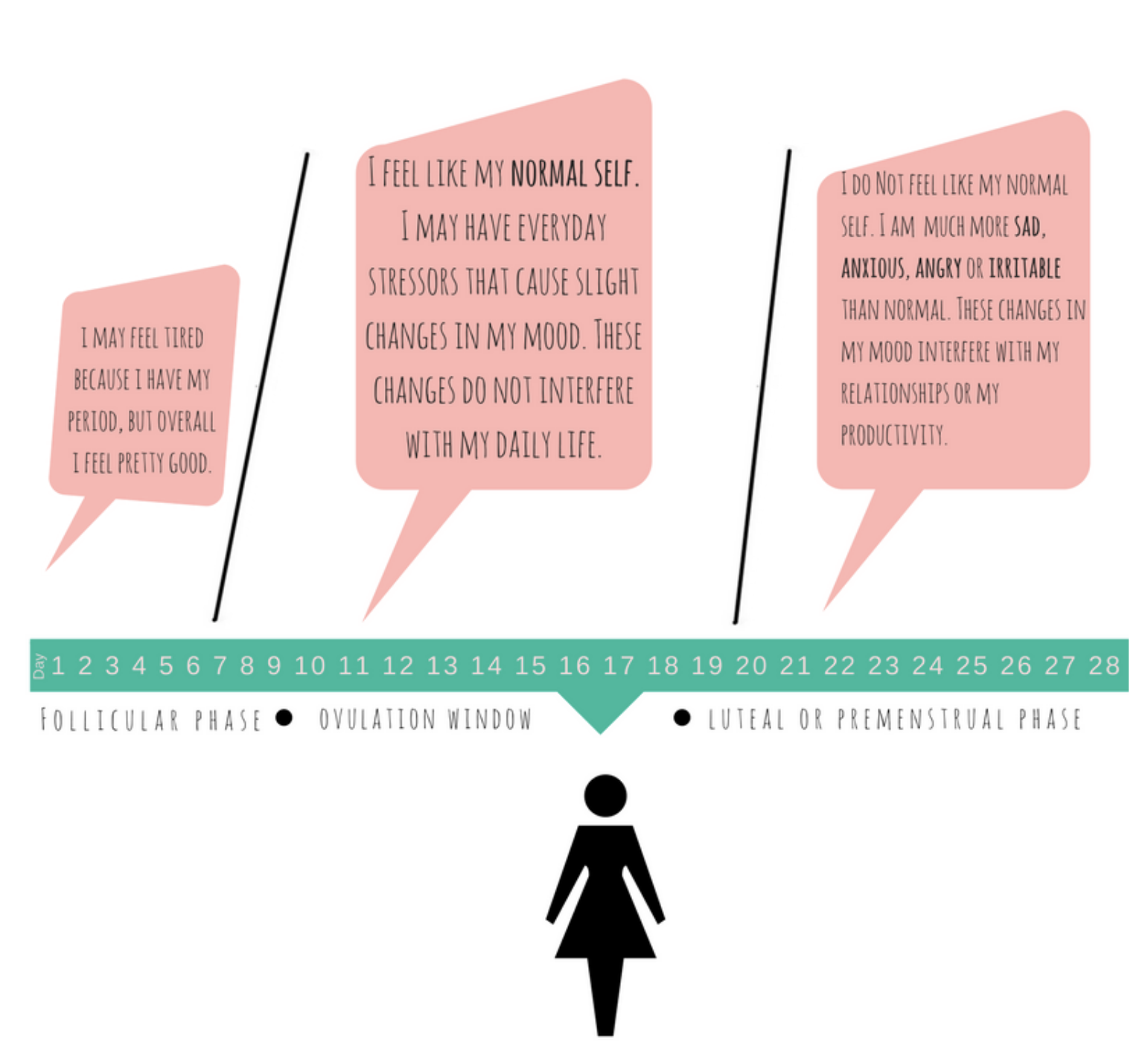What are PMS and PMDD?
PMS
Premenstrual syndrome (PMS) is a common health problem, affecting 20%-30% of all premenopausal women. Common symptoms of PMS include feelings of sadness, anxiety, irritability and overwhelm the week before a woman gets her period. To be considered PMS these symptoms must go away shortly after the period arrives.
PMDD
For some women, these symptoms are so severe that they interfere significantly with relationships, productivity at work or school, and interest in everyday activities. This is called Premenstrual Dysphoric Disorder (PMDD). PMDD affects nearly 1 in 20 women worldwide. To be diagnosed with PMDD, women must experience at least 5 mood, physical, or behavioral symptoms for at least 4 days the week before their period, and at least one of these symptoms must be mood related.
Researchers at the University of Pennsylvania are running studies that aim to discern the neurobiology behind these disorders as well as the best methods of treating them. Both women who have PMS/PMDD as well as women who don't have PMS or PMDD can contribute to these studies.

Related Publications
Hantsoo L., Epperson C.N. (2015). Premenstrual Dysphoric Disorder: Epidemiology and Treatment. Current Psychiatry Reports, 17(11):87.
Epperson, C.N., Hantsoo, L. (2016). Making Strides to Simplify Diagnosis of Premenstrual Dysphoric Mood Disorder. American Journal of Psychiatry, 174(1): 6–7.
Epperson, C.N., Kim, D.R., Hantsoo, L. (2015). Premenstrual Dysphoric Mood Disorder. In Stolerman, I.P. and Price, L.H. (Eds.) Encyclopedia of Psychopharmacology. (2nd ed., pp 1348-1351). New York: Springer.
Epperson, C.N., Hantsoo, L. Menstruation and PMDD. (2014). In D. Barnes (Ed.) Women’s Reproductive Mental Health Across the Lifespan (pp 49-72). New York: Springer.
